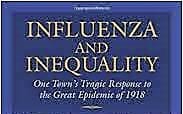 It’s that time again – you know, when we all make well-meaning declarations for improvement in the coming year. Our New Year’s resolutions might have us vowing to exercise more, drop a few pounds (the Covid 15) or read a book each week. Yet even when the task is as fun as reading, many of us abandon our goals in a dishearteningly few weeks, all the while wondering: What’s wrong with me?
It’s that time again – you know, when we all make well-meaning declarations for improvement in the coming year. Our New Year’s resolutions might have us vowing to exercise more, drop a few pounds (the Covid 15) or read a book each week. Yet even when the task is as fun as reading, many of us abandon our goals in a dishearteningly few weeks, all the while wondering: What’s wrong with me?
As it turns out, it’s not you, specifically; there’s just a flaw in the human system. Strength of will, much like muscle strength, is a resource that can be developed with use. That being said, like muscle strength willpower gives out if over-taxed. So while we should employ willpower regularly to keep it strong, it’s useful to follow the adage of working smarter, not harder. A long time ago I noticed that my willpower concerning junk food is directly related to proximity. Kept in the house, it always entices and I must mentally keep resisting. So I don’t keep it around. This practice has helped me stay in shape but I never analyzed why it works until I discovered James Clear’s Atomic Habits: Tiny Changes, Remarkable Results. Clear explains how habits are formed and how we can be more intentional about the process. In addition to being a useful guide it is an interesting read, woven throughout with illustrative anecdotes.
The book opens with the gripping if grim account of how, as a high school sophomore, Clear was accidentally hit in the face with a baseball bat. His injuries were traumatic and his recovery slow, as was his return to baseball. Given that he began his college career at the bottom of the team’s roster, he switched his focus to building simple habits like going to bed early and keeping his room tidy. This gave him a sense of control; it also had an impact on his study habits. He then began lifting weights. By graduation he had been selected as his university’s top male athlete, and awarded its highest academic honor. Clear later drew on his experience to begin writing about habits in a biweekly blog, which eventually led to this book. In it, he presents information across multiple fields, noting that he is offering a synthesis of existing ideas. His intent is to make them actionable. Clear first identifies the four components that comprise a habit: the cue, the craving, the response and the reward – terms that may sound familiar to readers of Charles Duhigg’s book The Power of Habit. These steps link together to form a habit loop, or automatic response that occurs without conscious thought. That might seem a little sinister but take heart, dear ones: the automatic nature of habits can also be used to curb bad behavior. The key is to recognize what is driving us and then assume control of the wheel. By interrupting the cycle, we can break a bad habit, however deeply ingrained it may feel; we can also create conditions that will reinforce the adoption of a new habit. If all this sounds a bit dry, please attribute that to my description not the work itself. This book is one of the best I’ve read from this genre in that the anecdotes woven throughout are an interesting read in their own right.
The breadth of Clear’s system cannot be covered in the length of an article (if it could, I’m certain he would’ve done it.) Instead, I’ll highlight a few of the points that had the most impact on this veteran of the habit wars. Simple as this will sound, one of the ways in which we can reinforce a habit is to identify a time and a place when we expect it to occur. He notes that all too often people are vague about their goals (to get in shape, to read more) and that this vagueness is what inhibits the action from happening. The more specific a person is, the more likely the habit will occur. For example: I will go to the gym Tuesday at 10 o’clock and lift weights for a half hour. The phenomenon of specificity is not just limited to, for instance, physical fitness goals; one study showed that people who were asked about what route they would take to drive to the polls were actually more likely to vote.
One other method that Clear suggests is habit stacking, a method of pairing habits derived from the work of behavior scientist BJ Fogg. Instead of assigning a day and time for a task, you would do it following an action you routinely take. This sounds like the same thing as assigning a time, but it’s not. I tried habit stacking, and can attest to the fact that it succeeded where my previous attempts had not. I have been meditating on and off for years. This practice lowers my stress, increases my happiness and keeps me centered, but somehow it kept getting shuffled to the background. Until, that is, I paired it with a deeply ingrained existing habit: every day after I turn on the coffee pot, I meditate for ten minutes. Happily, I’m several months deep into this daily habit, the continuity of which I attribute not just to habit stacking but to the third tip I will share from Clear’s book: it’s fine to start small and increase the time commitment of your habit after it is established. Regular meditation eluded me in part because I didn’t have the hour (or half hour, or twenty minutes two times a day, etc.) recommended. Although I plan to increase the amount of time I sit, for now I’m pleased with my progress.
For a deeper dive into how you can wrangle your habits, read the book in its entirety. I recommend the audio version, which is enjoyably read by the author and available digitally or as a book on CD. The author provides numerous supporting resources, referenced throughout the book, on his website jamesclear.com.
Kirstie David is the Literacy/Outreach Librarian at the Morrill Memorial Library in Norwood, MA. Look for her article in the January 14, 2021 issue of the Transcript and Bulletin.




